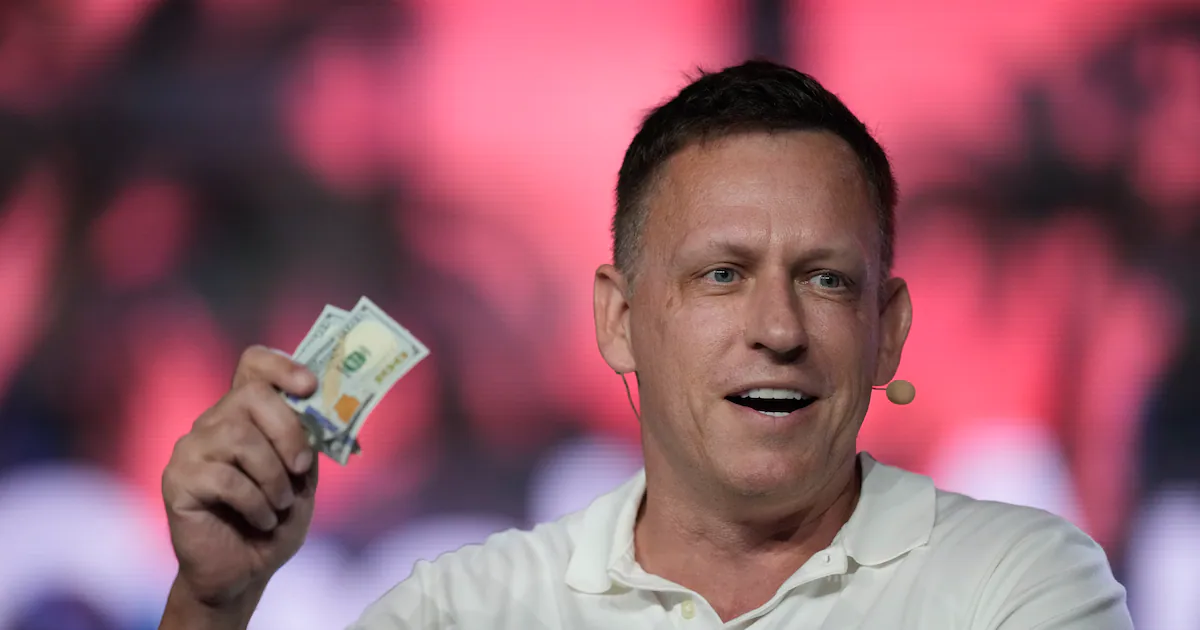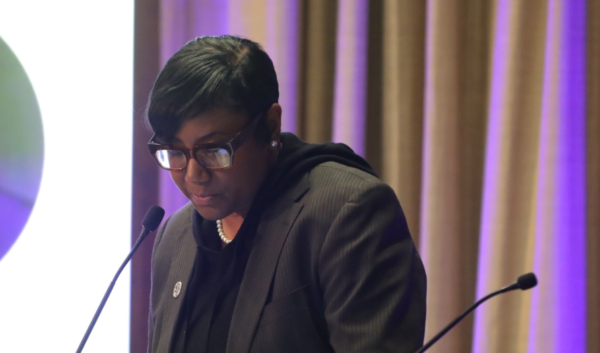Copyright Resilience

Recorded on: Sep 25, 2025 Description The severity of the climate crisis continues to deepen, despite the increased use of renewable energy sources and international policies attempting otherwise. Even as emissions reduction efforts continue, our world faces more extreme weather, sea level rise, and human health impacts, all of which are projected to accelerate in the coming decades. This raises an important but controversial question: at what point might more drastic interventions, like geoengineering, become necessary in order to cool the planet? In this episode, Nate interviews Professor Ted Parson about solar geoengineering (specifically stratospheric aerosol injection) as a potential response to severe climate risks. They explore why humanity may need to consider deliberately cooling Earth by spraying reflective particles in the upper atmosphere, how the technology would work, as well as the risks and enormous governance challenges involved. Ted emphasizes the importance of having these difficult conversations now, so that we’re prepared for the wide range of climate possibilities in the future. How does stratospheric aerosol injection actually work? What is the likelihood that a major nation (or rogue billionaire) might employ this approach in the next thirty years? What ethical, moral, and biophysical concerns should we consider as we weigh the costs and benefits of further altering Earth’s planetary balance? About Ted Parson Edward A. (Ted) Parson is Dan and Rae Emmett Professor of Environmental Law and Faculty Director of the Emmett Institute on Climate Change and the Environment at the University of California, Los Angeles. Parson studies international environmental law and policy, the societal impacts and governance of disruptive technologies including geoengineering and artificial intelligence, and the political economy of regulation. His most recent books are The Science and Politics of Global Climate Change (with Andrew Dessler), and A Subtle Balance: Evidence, Expertise, and Democracy in Public Policy and Governance, 1970-2010. His 2003 book, Protecting the Ozone Layer: Science and Strategy, won the Sprout Award of the International Studies Association and is widely recognized as the authoritative account of the development of international cooperation to protect the ozone layer. In addition to his academic positions, Parson has worked and consulted for the White House Office of Science and Technology Policy, the Office of Technology Assessment of the U.S. Congress, the Privy Council Office of the Government of Canada, and the International Institute for Applied Systems Analysis (IIASA). Show Notes & Links to Learn More Download transcript The TGS team puts together these brief references and show notes for the learning and convenience of our listeners. However, most of the points made in episodes hold more nuance than one link can address, and we encourage you to dig deeper into any of these topics and come to your own informed conclusions. 00:00 – Ted Parson info + works 00:59 – Emmett Institute on Climate Change and the Environment 04:08 – Millions of people die each year from inaction on global heating 04:23 – June 2024 marked one year of global temperatures at 1.5ºC above pre-industrial temperatures 04:45 – Wood Mackenzie’s 2 – 3.1ºC outlooks for the energy transition 05:16 – International Energy Agency: “The world now invests almost twice as much in clean energy as it does in fossil fuels…” 05:34 – The Intergovernmental Panel on Climate Change: Global greenhouse gas emissions must be reduced 43% by 2030 06:18 – Extreme flooding in Pakistan, Heatwaves in India 06:58 – Precipitation extremes at 1.5ºC warming 07:20 – Richter scale 08:00 – Heat wave effects on human health and productivity 08:36 – Negative emissions 09:35 – Geoengineering 09:45 – The Blue Marble photograph 10:19 – White roofs to help with solar reflectivity, Forests, snow cover, and albedo 11:30 – Urban heat island effect 12:09 – Dark urban surfaces absorb more heat 12:18 – Thermal absorption of brick 12:54 – Extreme heat is a threat in rural areas 13:09 – Changes in U.S. seasonal temperatures 14:30 – Marine cloud brightening 15:13 – Space sunshade 15:33 – The Police – King of Pain 16:49 – Stratospheric Aerosol Injection 17:25 – Where air pollution comes from 17:43 – Acid rain, Tropospheric ozone pollution, Health problems due to fine particulates 17:58 – Atmospheric sulfur cooling the planet 18:47 – Volcanic effects on climate change, The sulfur cycle 19:29 – Mount Pinatubo eruption and its effect on global climate 19:48 – Post-eruption cooling effect 20:05 – Aerosols in nature 21:15 – Lifetime of pollutants in the troposphere 21:27 – Stratospheric residence time 22:34 – 2025 Congressional subcommittee on transparency regarding government weather and climate engineering 22:44 – NOAA weather modification project reports 24:14 – Edward Parson and David W. Keith – Solar Geoengineering: History, Methods, Governance, Prospects 25:08 – 1997* study on stratospheric aerosol injection 25:56 – Bala Govindasamy and Ken Caldeira – Geoengineering Earth’s radiation balance to mitigate CO2-induced climate change 27:48 – Geoengineering can restore surface temperature for >90% of the Earth’s area 28:00 – Anthony Harding, et al, – Impact of solar geoengineering on temperature-attributable mortality 28:24 – Solar geoengineering could impact ozone chemistry, create acid rain 29:55 – Ted Parson, et al. – Evaluating the efficacy and equity of environmental stopgap measures 30:11 – Injecting 12 million tons of sulfur dioxide per year would cool the planet by around 0.6°C 31:52 – Optimal injection locations, rates, and heights 34:40 – Costs of stratospheric aerosol injection 35:28 – Limitations on existing jet engine types needed for this operation 36:03 – David Victor “Greenfinger” scenario 36:31 – Joshua B. Horton, et al. – Who Could Deploy Stratospheric Aerosol Injection? The United States, China, and Large-Scale, Rapid Planetary Cooling 42:26 – Injecting sulfur dioxide at multiple latitudes allows some tailoring of the resulting climate response 42:52 – Reverse colonization claims about stratospheric sulfur injection 44:54 – Who Owns the World’s Fossil Fuels? 45:19 – Moral hazard 46:07 – Termination shock 49:38 – Edward Parson and Holly Buck – Large-Scale Carbon Dioxide Removal: The Problem of Phasedown 53:12 – EU call for temporary ban on solar geoengineering technologies, climate vulnerable nations reject U.S.-led push for solar geoengineering 53:34 – Global initiative for non-use agreement regarding solar geoengineering 57:55 – Kim Stanley Robinson – The Ministry for the Future, TGS Episode 1:00:35 – Edward Parson and Jesse Reynolds – Solar geoengineering: Scenarios of future governance challenges 1:02:33 – Planetary boundaries 1:02:37 – Failure to adopt emissions reductions from Paris Climate Agreement, failure to deliver on climate adaptation funds 1:03:56 – Edward Parson – Protecting the Ozone Layer: Science and Strategy 1:04:01 – Edward Parson – The Montreal Protocol: The First Adaptive Global Environmental Regime? 1:08:20 – Research involving alternatives to sulfate aerosols, risks posed by stratospheric aerosol injection 1:10:08 – Global sulfur dioxide emissions 1750-2022 1:10:17 – IMO limit on sulphur content in ship fuel 1:10:24 – Leon Simons on TGS, Paper on Impact of Declining Aerosol Emissions on Climate 1:10:44 – Zeke Hausfather and David Keith – Turns Out Air Pollution Was Good for Something 1:11:48 – Extreme fires in Spain and California this year, Mediterranean and Western Europe heat extremes 1:12:44 – Joshua B. Horton and David W. Keith – Multilateral parametric climate risk insurance: a tool to facilitate agreement about deployment of solar geoengineering? 1:17:30 – Degrees Global Forum meeting in South Africa Teaser image credit: Author supplied.



